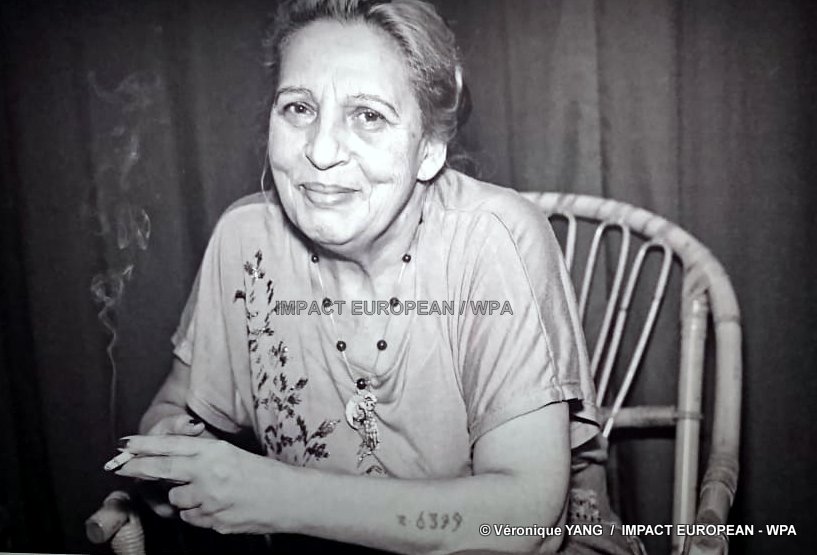Testimonies of the persecution of the gypsies by the Nazis are rare. Ceija Stojka is one of only to have written and have painted its history. Having survived the absolute horror of three concentration camps: Auschwitz–Birkenau, Ravensbrück and Bergen–Belsen, it will wait 40 years to start to paint and write and testify to fight the lapse of memory.
Ceija Stojka was born on May 28th, 1933 in Kraubath year DER Wall in Styrie (Austria) in a family from six children. His/her parents were Rom horse dealers of Central Europe. Following Anschluss in 1938, the family resulting from Lovara, a long line of horse dealers originating in Hungary but installed in Austria since centuries is obliged to turn into a sedentary population itself by transforming the horse–drawn caravan into wood hut.
At the 10 years age, after the arrest of her father in 1941 (he dies in Dachau in 1942), and to have lived hidden with her mother and her brothers and sisters, the family is stopped then off–set in 3 camps successively of which she survives. From this period, she will say: “I am not afraid, my fear remained in Auschwitz and in the camps, Auschwitz is my coat, Bergen Belsen my dress and Ravensbrück my vest, of what should I be afraid”,
After the capitulation of Germany, Ceija and its mother join Vienna. It sells to with it carpets and fabrics in door–to–door or on the markets until 1984. It has three children.
40 years later, in 1988, whereas it is 55 years old, it feels need to speak about this time painful about its life while launching in memory work while writing several works (4 books between 1988 and 2005) in style poetic and very personal, which makes to this autodidact the first Rom woman survivor of the camps of the death which testifies to its concentration–like experiment against the lapse of memory and the refusal, against ambient racism. She then endorses very quickly a role of militant and activist pro–Rom in the Austrian company.
As from the years 1990, it starts to paint and to draw and idiot will be centered there until little time before his disappearance in 2013.
Its work, paintings or drawings, realized in about twenty years between 1988 and 2012, on paper, fine paperboard or fabric, account more than one thousand of parts of which 150 have just been exposed for the first time at Paris with the Red House. Ceija painted the every day, in its apartment of Kaiserstrasse in Vienna, with the acrylic resin, often with the fingers, recovering the fabric or the paper of a thick coat of paint. One finds two different lines in his work, the period of the happy life in the horse–drawn caravan in the Austrian countryside with others roms and the terrible period of the war and deportation endured by his family without forgotten the meadows of 500,000 Roms dead killed by the Nazis.
Besides the exposure shows the various periods in the various rooms. It is first of all a double eye which accommodates us and invites us not to close the eyes on what occurred, one discovers then the photography of the artist. All starts with “When one rolled” then “the hiding place, the tracking, the deportation”, then “the camps” Auschwitz, Ravensbruck and Bergen–Belsen, finally “the return to the life” where one finds the fruits and vegetables but also the sunflowers, flowers which seek the sun bringing the hope for this woman who lived thanks to her faith and the Virgin that it represents in her tables.
To leave the exposure, one finds oneself accompanied by cloud of corbels which symbolize the death but which in the Rom culture plays a part of messenger between dead and alive.










Share this content:



Plus d'histoires
The Zelensky Couple’s European Tour for Peace
The Most Beautiful Avenue in the World Ablaze: A Dream of Lights Illuminates Paris
Macron and Vučić Meet at the Élysée: European Integration, Strategic Cooperation and Regional Stability